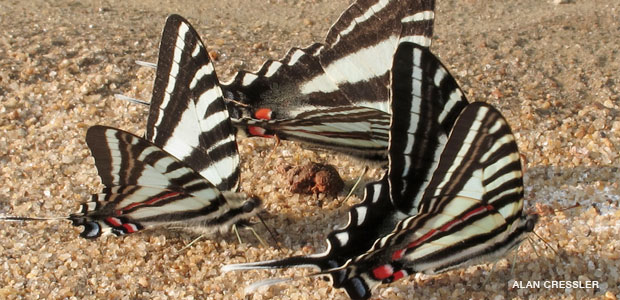How will climate change affect future butterfly populations and their interspecific interactions?

Global climate change has been shown to have a prominent impact on phenology, or the timing of life events such as spring flowering date or emergence from hibernation. This is particularly true for insects, whose life cycles are often linked to changes in temperatures not only within years but between years as well. Butterflies are particularly strong candidates to look at how global climate change affects species phenology, as they’re easy to observe, easy to identify and have distinct life stages that can be recorded. As temperatures steadily rise, it is possible that this increase in heat will cause some butterfly species to emerge earlier and earlier over time. This can have major ecological consequences, especially if host plants that the butterflies depend on do not mature earlier along with the butterflies, leading to a disjunction between butterflies and their food source.
In collaboration with Nick Haddad at NC State University and Leslie Ries at the University of Maryland, we are trying to predict when specific butterfly species will first emerge in the year using a simple temperature-based measurement called growing degree days. Growing degree days (GDD) are defined as the number of degrees each day that the temperature exceeds 10° C, which is considered the minimum temperature needed for many plants to grow. We tally GDD on a daily basis to create a cumulative total that can give us a basic indication of how quickly each year warms up and how it compares to previous years. When focusing on butterflies, which as insects are directly linked to temperature in both their own growth and the growth of their specific host plants, GDD may be a useful and straightforward way to predict when individuals will start to emerge in the spring and summer.
Using data from 13 years of transect surveys conducted by volunteers throughout Ohio, we have chosen a dozen species to test how closely GDD can be used to predict first emergence of the year. Butterflies we are studying include familiar backyard species such as Monarchs (Danaus plexippus) and Spicebush Swallowtails (Papilio troilus), as well as lesser known species such as Peck’s Skippers (Polites peckius) and Wild Indigo Duskywings (Erynnis baptisiae). These butterflies represent a wide range of life history traits, from early spring to mid-summer emergence, from single to multiple flight periods per year. In creating a simple model to predict emergence date, we hope to provide a useful tool for understanding how climate change might affect future butterfly populations and their interspecific interactions.
Contributed by Heather Lessig
- Categories:
